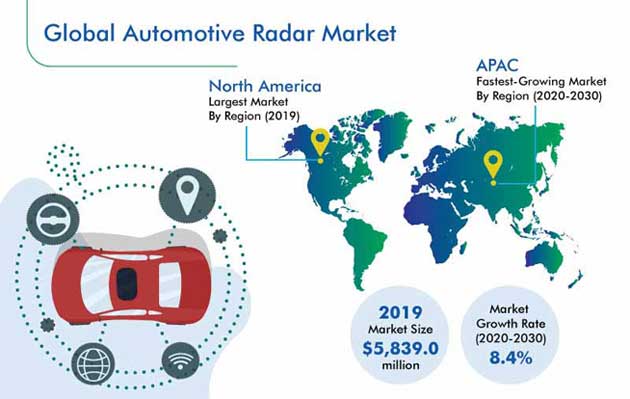Navigating the Spectrum: Trends in the Automotive Radar Market
Vehicles equipped with advanced driver-assistance systems (ADAS) require large number of radars, as these enable numerous automobile features. ADAS features like eye-tracking, virtual assistance, gesture recognition, natural language interface, virtual assistance, and speech recognition are extensively dependent on advanced radar systems. Moreover, future developments in ADAS technology will propel the installation of radar-enabled detection units in the vehicles. Owing to this reason, the automotive radar market will progress at a CAGR of 8.4% during 2020–2030. According to P&S Intelligence, the market generated revenue of $5,839.0 million in 2019.
Automotive Radar Market Research Report@ https://www.psmarketresearch.c....om/market-analysis/a
Moreover, surging deployment of long-range radars (LRRs) will supplement the market growth in the forecast period. LRR equipped automobiles can detect other vehicles and other foreign objects in their path, which are up to 150 meters away. This range is extremely wider than short- and medium-range radars. Hence, the improving object detection capabilities of LRRs are increasing their adoption in autonomous vehicles, as they assist in enhancing the safety features of the automobiles. In addition to safety features, the installation of LRRs offers comfort to the drivers while on road.
Automakers install radars in fully autonomous vehicles and semi-autonomous vehicles, due to their wide applications in systems, such as adaptive cruise control (ACC), blind-spot detection (BSD), intelligent park assist (IPA), and autonomous emergency braking (AE. Additionally, based on the level of autonomy, automakers install one LRR and two short- and medium-range radars in level 1 autonomous vehicles and one LRR and three short- and medium-range radars in level 2 vehicles. Whereas, level 3,4, and 5 autonomous vehicles encompass two LRRs and four short- and medium-range radars.
Further, the vehicle autonomy segment of the automotive radar market is bifurcated into semi-autonomous and fully autonomous. Between the two, the fully autonomous category will witness the fastest growth in the forecast period, due to the widespread deployment of fully autonomous vehicles in the shared mobility service industry. These automobiles are largely deployed by fleet operators that offer robotaxi services. In the coming years, the procurement of autonomous vehicles will escalate at a rapid pace, on account of technological developments and high focus on safety and comfort features in the vehicles.
In recent years, numerous market players have focused on facility expansion to cater to the spurring demand for automotive radars and expand their production capacity. For example, in September 2019, DENSO CORP. announced to expand its Hokkaido manufacturing plant by increasing its production capacity in several stages, starting from October 2021. With the capacity expansion, the key market player aspires to meet the mounting demand for semiconductor sensors for radars and other vehicle components.
